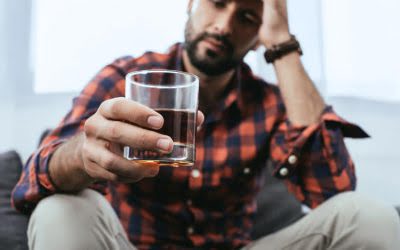They may also be able to advise on relevant online/digital resources to support you in making changes to your diet and/or physical activity patterns. Patient organisations may also be able to provide local information and resources about managing your weight, diet and other medical conditions. There is an increased understanding that environmental factors can make it difficult for patients to change their lifestyle and lose weight. Examples of these factors are the fact that sweets are cheap and readily available at every kiosk or supermarket, with widespread advertising on the television and internet. It is also difficult for patients living in a surrounding where several people eat and live unhealthily. Dietary patterns represent the overall combination of foods that can produce synergistic health effects.
When there is a buildup of fat, it leads to inflammation and in worst cases leads to liver failure as well. In the FGF21 peritumoral injection model, 6-week-old female C57BL/6J mice weighing 20.4 ± 1.25 g were used. To establish the model, 1 × 106 E0771 cells were suspended in PBS and injected into the second mammary fat pad of each mouse. One week after injection, tumor-bearing mice were randomly divided into two groups. For H&E staining, tissues were fixed in 4% paraformaldehyde, embedded in paraffin (76242, Sigma), and sectioned into 5 mm slices. After deparaffinization and rehydration, the sections were stained with hematoxylin and eosin (HT110116, Sigma) and mounted with DPX (100579, Sigma).
What Monitoring Is Recommended for NAFLD?
The aim is to generally eat and drink healthily most of the time and not have too much or too little of anything. The overall picture alcoholic liver disease is more important than any one small detail. If you are struggling to change your diet, ask to be referred to a dietitian.

However, in our study, we did not observe significant effects of FGF21 on the migration of breast cancer cell lines (Fig. S4). Given that cancer cells are resistant to apoptosis, we conducted further experiments to confirm the anti-apoptotic effects of FGF21. We used the chemotherapy drug doxorubicin (DOX) as an apoptosis inducer [21] and observed antagonistic interactions between DOX and FGF21 on tumor cell viability (Fig. S2F). As expected, both the Annexin V assay (Figs. 6F and S2G) and the TUNEL assay (Figs. 6G and S2H) confirmed that simultaneous administration of FGF21 effectively mitigated DOX-induced breast cancer cell apoptosis. The caspase family activity test indicated that FGF21 inhibited DOX-induced breast cancer cell apoptosis via both extrinsic and intrinsic pathways (Figs. 6H and S2I). These results were further confirmed by the consistently activated anti-apoptosis signaling pathways in both cell levels (Figs. 6I, S2L and S2M) and tumor levels (Figs. 6L and M, S2J and S2K).
d. Should tests be repeated over time?
This usually means a stage of F2 or more on the most widely used F0 to F4 scale, but other scales and hence other definitions can be used. The presence of scar tissue is regarded as a sign that the liver is not able to cope with the damage that has occurred. Liver biopsy should be considered for patients with NAFLD who are at increased risk of NASH or advanced fibrosis based on noninvasive test results. It should also be considered if other possible causes of chronic liver disease (Table 422) cannot be excluded with noninvasive tests. While there’s no medicine yet to reverse steatotic (fatty) liver disease, making changes to what you eat, how much you drink and increasing your activity levels can help. Many people find that they can slow, stop and even reverse the fat accumulation in their liver by managing metabolic factors such as weight, cholesterol (and other blood lipids), blood pressure and blood sugar.

But more studies on the individual health-related quality of life must be set up to develop strategies to improve quality of life with treatment. Treatment here encompasses both non-medical (lifestyle) and medical (drug) treatment. Non-alcoholic fatty liver disease can evolve from just a fatty liver to severe liver disease, over different stages of severity. In case a liver biopsy is used to decide whether a drug is needed or not, treatment is indicated when certain conditions are met. The NASH must have a certain degree of activity, so very mild disease probably does not warrant drug treatment.58 There also needs to be a certain severity, so a certain stage of scarring.
How long can someone live with fatty liver disease?
It’s therefore advisable to cut down or stop drinking alcohol. This is a type of scan where sound waves are used to create an image of the inside of your body. The authors would like to thank the patients from ECPO (European Coalition for People Living with Obesity), the patients from Deutsche Leberhilfe e.V.

In the FGF21 sustained-release model, FGF21 was prepared in water at a concentration corresponding to a release rate of 0.08 mg/kg/day. This solution was then packed into an osmotic pump (1004 W, RWD, Guangdong, China) following the manufacturer’s instructions. For the experiment, 6-week-old female C57BL/6J mice weighing 19.85 ± 1.45 g were anesthetized.
